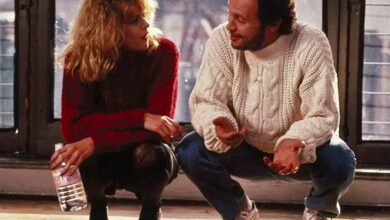Life’s a Party, Not a Race

[ad_1]
Some months back, a friend sent me a debut novel she’d read and loved. It had a splashy cover with a jaunty typeface, like the literary equivalent of a Fanta commercial.
My reaction was a mix of interest — of course I wanted to check out the buzzy book — and envy. Another twenty-something wunderkind author. How do they do it? I wondered. How do they find the focus? What wisdom do they draw upon when they’ve only been alive for, like, five minutes? I pictured the “about the author” page, a cherubic face smiling atop a list of prodigious accomplishments. Because I am apparently a masochist, I looked them up. The author was in their 50s.
There is nothing surprising about this story except my blatant, ridiculous ageism. People write all kinds of books at every age. (One thing I particularly love about writing as an art form is that authors often improve with time, their voices sharpening as their well of experience deepens.) As one who aspires to debut well into my 30s, and hopes to write forever, I certainly don’t believe that lively covers nor buzzy books are the exclusive domain of the very young. So, why did I make the assumption?
We (pointing my finger squarely at American culture) love a rapid ascent. Our icons are so often young — or make great effort to look like they are. And I don’t just mean Hollywood. We have the National Book Foundation’s 5 under 35 and the Fortune 40 Under 40.
The one that really gets me is the Forbes 30 Under 30. I’m lucky to be acquainted with a couple people who’ve graced that list, and can attest that they are lovely, impressive humans, deserving of every bit of praise. I can also attest that they found their callings at a young age and were able to doggedly pursue them. That is amazing…and rare.
For a lot of us, clarity takes its sweet time. Hell, the prefrontal cortex — the part of the brain responsible for complex planning, decision making, and moderating social behavior — doesn’t fully develop until age 25.
If everyone lived from zero to 100 and matured at the same rate, it would be fair to issue sweeping comparisons. But that’s not how it works. We don’t all have the same opportunities. We don’t all take the same paths. We don’t all get the same amount of time.
When I was a kid, my dad frequently spouted the statistic that the average American changes jobs five times over the course of their life. Since then, the figure has grown to 12 jobs (11.7 if you’re being picky). Whatever the number, I understood his point — you don’t always hit the nail on the head the first time around; circumstances change; people change; don’t be too proud or too afraid to pursue something new, at any juncture.
*****
For years, I’ve collected quotes and stories and facts about people that inspire me. (This makes it sound more organized than it is — in practice, I jot things down in a million places and scramble to find them later.) Among them is the “people who found success after 40 and/or did cool stuff later in life” list. Here are some of them:
Julia Child first tasted French cuisine at 36. She fell so in love with it that she studied it obsessively, becoming skilled enough to write her first cookbook at 50 and host The French Chef at 51.
Edwina Brocklesby, the “Irongran,” became the oldest British woman to compete in an Ironman at 72. She did not begin exercising until her 50s.
Laura Ingalls Wilder published the first of the “Little House” books at age 65.
Vera Wang designed her first dress at 40.
Frank McCourt took up writing at 65. His book Angela’s Ashes won both the Pulitzer Prize and National Book Critics Circle Award.
Kittie Weston-Knauer, literal trailblazer, paved the way for women in BMX racing — going up against men and cycling through knee and hip replacements. At 73, she is currently the oldest woman competing, with no plans to stop.
Martha Stewart worked as a caterer in her early years, but didn’t publish her first cookbook, or begin her meteoric ascent as a lifestyle maven, until her 40s.
Toni Morrison published her first book, The Bluest Eye, at 40. Along with an extensive list of honors, she won the Pulitzer Prize for Fiction at 57 and the Nobel Prize in Literature at 62.
Yuichiro Miura, 89-year-old skier and adventurer, became the oldest person to climb Mount Everest when he reached the summit (for the third time) at age 80.
Iris Apfel, 100-year-old self-described “geriatric starlet,” is proof that fashion icons (and entrepreneurs) can dazzle and inspire at any age.
Harriette Thompson, a classical pianist and cancer survivor, began to run marathons at 76. She later broke the record for being the oldest woman to run a marathon, at 92, and the oldest woman to run a half marathon, at 94.
Dame Judi Dench was revered on the London theater scene (she advanced to Dame in 1988), but her Hollywood film career didn’t take off until Goldeneye, when she was in her 60s. She won her first Oscar, for Best Actress, at 64.
Grandma Moses (Anna Mary Robertson Moses) began painting in earnest at 78, when embroidery became too difficult due to arthritis. Her work continues to be shown, and to sell, worldwide — the painting Sugaring Off sold for $1.2 million in 2006.
Harry Bernstein published his first memoir, The Invisible Wall, at age 96. He went on to write two more books, saying “The 90s were the most productive years of my life.”
*****
In the United States, if you are pregnant over age 35, it’s considered a “geriatric pregnancy.” This is an outdated term — the preferred terminology is “advanced maternal age” — but trust me, the former still makes the rounds.
In France, a pregnancy over age 40 is called a “grossesse tardive” — as a French friend explained, tardive means you’re a bit delayed for something, “like when you’re late for a plane, or late to the party.”
No, I am not pregnant. But as one who is routinely late to life’s parties, I’ve decided to apply this phrase to whatever I want.
“Late to the party” sounds preferable to “late bloomer,” another term I’d respectfully like to retire. Doing stuff later than others does not make you a defective flower. It makes you an interesting person who is living life on your own schedule. Date whenever you want. Dare whenever you want. Be whoever you want, whenever you’re ready.
My good friend recently decided to go back to school in her mid-forties, to pursue a path that always spoke to her, but took a backseat to the more “reasonable” choices she made early in her career. “There’s a part of me that thinks, f*ck, have I wasted the last twenty years?” she laughs. “But the answer is no. I wouldn’t have been as ready for it as I am now. In the end, everything has its time.”
The next time you find yourself confronted with some version of a “12 Under 12” list, repeat after me: It isn’t a race. It’s a party. Arrive whenever you want.
Caroline Donofrio was the features editor at Cup of Jo for many years and wrote about everything from friendship and breakups to books and lipsticks. She’s now the author of many books (including Tan France’s memoir!) and publishing a great weekly newsletter called Between a Rock and a Card Place. You can subscribe to her newsletter here.
P.S. Three women share their later-in-life accomplishments, and thoughts on aging.
(Photo of Caroline by Christine Han. This essay was first published in Caroline’s newsletter and is syndicated with permission.)
[ad_2]
Source link







